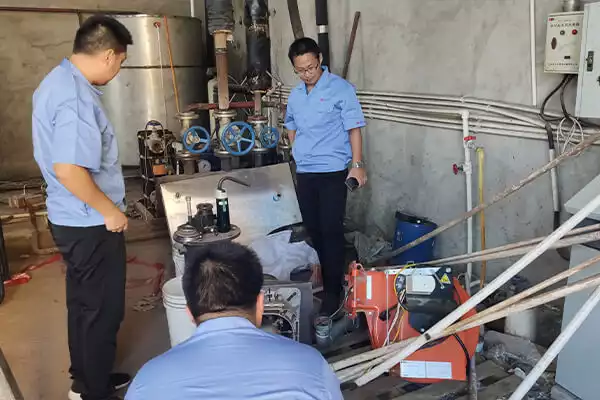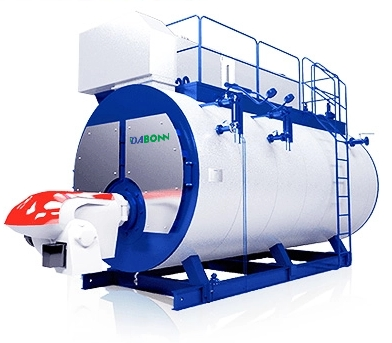
Introduction
Bleeding the boiler is a step that many people skip, but it’s important to know how to do it. Here, we explain what it takes to bleed a boiler, why it’s important, and how to perform the procedure yourself at home.
When do I Need to Bleed my Boiler?
Boiler bleeding is a common procedure in boiler maintenance across the country but can be confusing for those who have never done it before. It requires not only precision, but a specific set of steps to follow to ensure your boiler is properly maintained. If you’re not sure whether you need to bleed your boiler, here are some symptoms that may indicate you should:
Flue blockage
If your flue is blocked or partially blocked, this can negatively affect the performance of the boiler and cause problems with the circulation of water in the system. If you notice any signs of this happening (such as low-pressure steam or slow water flow), it probably means your flue needs attention.
Insufficient water level
If you find that you have too little water in the system (below 50%) then this could be causing a circulation problem and cause other problems later on. If this happens frequently, or if you have other symptoms such as overheating or low-pressure steam coming from the pipes instead of water vapor, it may be time to bleed the boiler!
Benefits of Bleeding a Boiler
Bleeding your boiler can help increase efficiency and save on energy bills. Here are some benefits of boiler bleeding:
- Reduced chance of corrosion.
- Improves efficiency by reducing pressure fluctuations in steam systems.
- Reduces water hammer noise caused by uneven water flow through pipes and fittings.
- Reduced risk of damage to equipment due to corrosion or scale buildup.
Methods to Bleed a Boiler
Boilers can be bleed using a variety of methods, each with its own advantages and disadvantages. Here are three ways to bleed your boiler:
Hand Pump: This method is the most common method for bleeding boilers. It involves using a hand pump to remove air from the system, allowing water to flow through the system. The hand pump needs to be attached to the gauge on the boiler and runs until you can see bubbles coming out of the top of the gauge.
Vacuum pump: A vacuum pump is another common method for boiler bleeding, as it can be combined with any of the other methods listed here. The vacuum pump sucks the air out of the system while adding water to it, allowing the water to flow through the lines again after being blocked by air bubbles caused by previous use (or lack thereof).
Air Compressor: An air compressor works similarly to a vacuum pump, but with one major difference: it uses pressurized air instead of vacuum air to remove air bubbles from the pipes of the system so that water can flow freely again.
Step-by-Step Process for Bleed a Boiler
Boiler bleeding is a process that helps remove air from the system, which can prevent the system from overheating. It is recommended that you bleed the boiler at least once a year. Or if the gauge is stuck for more than 24 hours.
To bleed your boiler, you will need:
• A set of wrenches
• A set of Allen keys
• A pair of gloves and goggles
Step 1. Turn off the power to the boiler and wait for it to cool completely. This should take about two hours.
Step 2. Open the access panel and locate the pressure gauge. If there is no access panel, you can usually find it on the top or side of the boiler. If your older model doesn’t have an access panel at all, you can also see it through a window in the wall!
Step 3: Open the vent valve. It is usually located near the top or bottom of the boiler. If there are multiple valves, open them all in order from smallest to largest. It may take a while for all the air to escape from the system; this is normal.
Step 4. Find a wrench that fits the pressure valve and turn it counterclockwise until all pressure in the boiler tubes is released (this will take approximately 30 seconds).
Step 5. Use a flashlight to check every pipe where air may have accumulated during the deflation process. And check that all air has been released. If there is any residue trapped inside after this step, continue.
Step 6: After all air has been released from the system, close all exhaust valves and cycle power to the boiler.
Conclusion.
In conclusion, bleeding a boiler is an essential operation during boiler maintenance. By now, you should already know how to bleed a boiler. And know when to bleed it, and the benefits of bleed it. If you want to learn more about the details of bleeding a boiler, please contact us at +0086 186-2391-5479.
Get your best price
Quickly compare 3 FREE quotes
- Engineer quick quote
- The overall delivery speed is fast
- Financial choice
- Low installation costs and cost savings
25 years+ of boiler R&D
More than 20 innovative technologies
